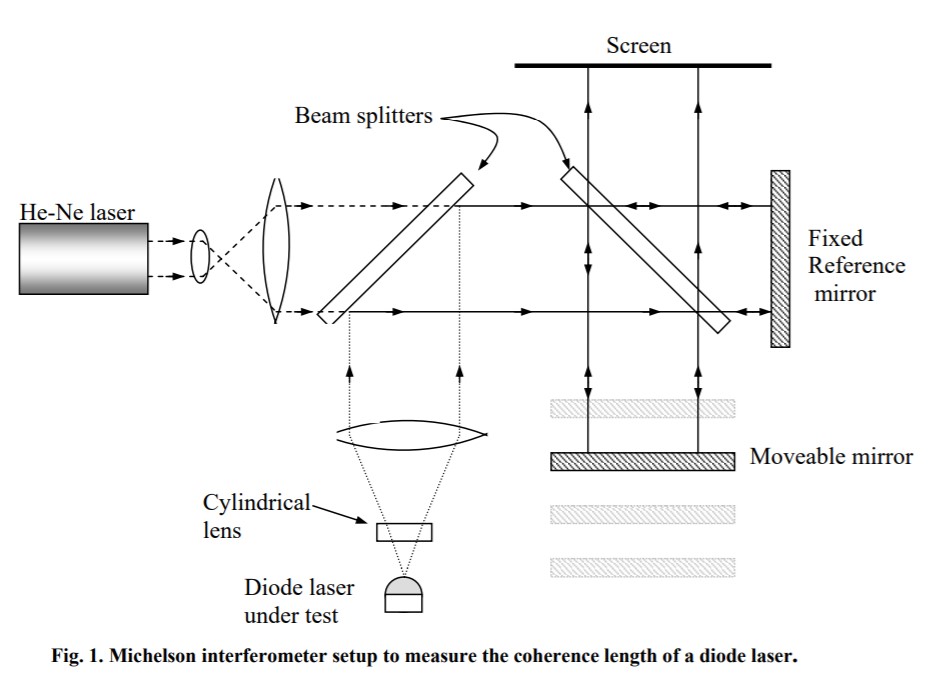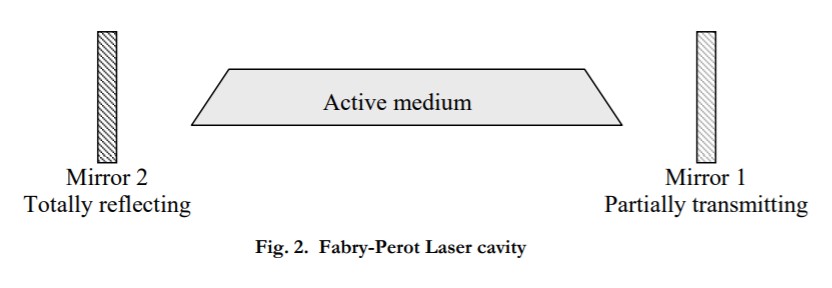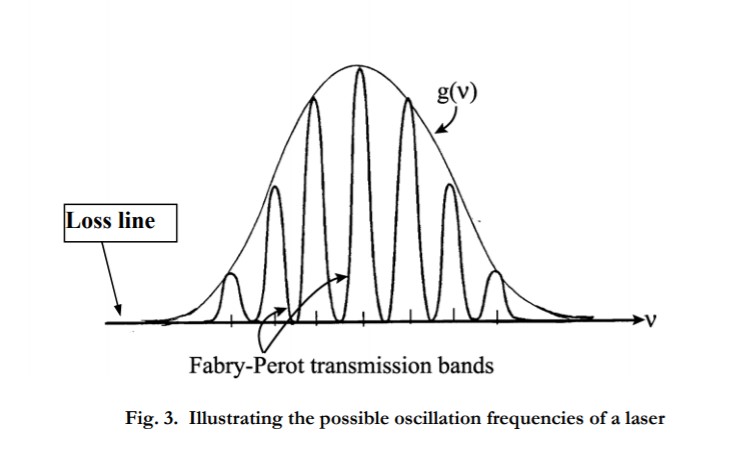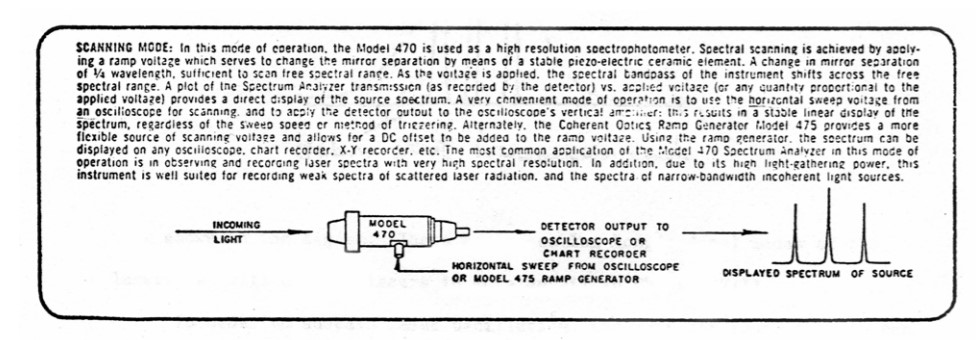6.2: In-lab Exercises
- Page ID
- 47376
Solid-State and Gas Lasers
6.1 Specific Laser Systems
- In this exercise, we want you to examine and identify the key components within a variety of commercial and homemade laser systems. These include:
- He-Ne laser
- Argon-ion laser
- Homemade CO2 laser
- Nd:YAG laser
- Visible semiconductor diode laser
- Infrared semiconductor diode laser
Specifically, you should look for things such as, output wavelength, length of the cavity, type of mirrors used, Brewster windows, pumping mechanism, typical out power, typical input electrical power, wall-to-light efficiency, mode locking or Q-switching mechanisms (describe their operating principles), expected coherence length, and cost.
For each of the six lasers, write brief comments on each of the characteristics listed in the above paragraph. As an example, you would fill in the missing information in the table below with text or numbers as appropriate for the chemical laser. Hint: go to the manufacturer’s website, Photonics Buyer’s Guide, or Laser Focus Buyers Guide.
Chemical Laser
- Operating wavelength:
- Approximate Cavity length
- Approximate length of gain medium:
- Type of mirrors used:
- Type/configuration of Brewster windows:
- Pumping mechanism:
- Typical optical output power:
- Electrical power requirements:
- Wall to light efficiency:
- Mode-locking mechanism:
- Q-switching mechanism:
- Expected coherence length:
- Approximate cost:
- Manufacturer:
2. For the open-cavity He-Ne laser, observe the light emitted from the side of the laser tube with the spectroscope. Describe your observations and their implications in terms of what you know about lasers and about the He-Ne laser system in particular. Add your description and analysis to your table in (a) for the He-Ne laser.
6.2 Semiconductor Diode Laser Characterization
- Using the Tektronix 576 curve tracer the Hitachi HL 6320G 10mW visible laser, connect the purple and white leads to the collector and emitter slots of the curve tracer. Make sure to set the base terminal to “open.” Also, set the vertical scale to 200mA/div and set the horizontal scale to 500 mW/div. The laser has a peak wavelength of 632 nm with maximum and minimum wavelengths of 640 nm and 625 nm respectively.
- Record the i-v characteristics of the laser diode.
- Direct the output light from the laser onto the silicon photodetector. Slowly increase the current into the laser diode, being careful not to saturate the detector or destroy the laser diode, and plot the output intensity-vs.-current characteristic for the laser.
Estimate the threshold current from your plot.
2. Using the HL 6320G semiconductor diode laser, record a picture of the output beam shape using a diffuser and the digital camera.
3. Measure the divergence angles of the output beam.
4. Use your measurements of Part (b) to estimate the cross-sectional dimensions of the laser cavity.
5. Coherence Length Measurement: The setup shown below is a Michelson Interferometer that can be excited simultaneously by both a He-Ne laser and the diode laser whose coherence length we want to measure. In this experiment, both laser beams are collimated before they reach the interferometer. As the He-Ne laser has a much longer coherence length than the diode laser, the main purpose of the He-Ne laser is to establish interferometer alignment at all times.
- With the two arms of the interferometer unequal by about 20 cm, align the system so that a spatial fringe pattern is formed on the screen by the He-Ne laser. Make a sketch of and comment on the fringe pattern you have produced (perfect alignment is not necessary). Now block the light from the He-Ne laser so it no longer excites the interferometer. With the diode laser turned on, observe its spatial interference pattern (if any) on the screen. Make a sketch of and comment on the fringe pattern owing to the diode laser. Compare the two interference patterns - comment on their similarities and differences. Record the positions of the two mirrors of the interferometer.
- Translate the movable mirror to new position, realign the system with the He-Ne laser beam, and repeat part (i).
- Repeat part (ii) as necessary until you have enough information to get a rough estimate of the coherence length of the diode laser. Show you data for each position you tried.
- Describe how you arrived at your estimate of the coherence length.

6.3 Spectral Analysis of the HeNe Laser
- The small, 2mW, He-Ne lasers in the modern optics lab are NOT monochromatic. Unfortunately the 1/2m Jarrel Ash grating spectrometer in laboratory does not have sufficient resolution to resolve the fine structure of the laser output. Although we know the He-Ne laser employs curved mirrors, for convenience in this exercise we will model its resonator as a Fabry-Perot interferometer (see Fig. 2). The laser resonator (cavity) modes (high Q) naturally select the output frequencies for the laser.

Lasing action thus occurs under the gain curve, g(ν), only at a discrete set of frequencies. However, in order to sustain laser oscillation, the gain per round trip in the cavity must be greater than the loss, and so no laser action occurs at Fabry-Perot transmission bands, which fall near the wings of the gain curve. The laser output therefore looks like that shown in the Fig. 3. These are the so-called longitudinal modes of the laser. 
The scanning Fabry-Perot spectrometer is an instrument that can resolve the fine structure of the laser output. Its principle of operation is described in Chapter 3 of the Class Notes. You will be using this instrument to study the light output of our small He-Ne lasers. It is also called an optical spectrum analyzer.
The MOL has an “Optical Spectrum Analyzer” made by Spectra Physics Corp. Although it is actually a spherical Fabry-Perot interferometer in the confocal mirror arrangement we will approximate it operation by assuming a parallel-plate Fabry-Perot configuration. The free spectral range of the etalon is given to be equal to 2 GHz. A description of the scanning mode in which the device operates is given below: 
The output of our 2-mW He-Ne laser consists of a number of closely spaced “modes.” Given that the gain bandwidth of the lasing medium (assume it is equal to the “Doppler width”) is approximately 1500MHz, how many modes would you expect to be present in the laser output? (See Fig. 4). 
2. Measure the modes separation and compare your results with the estimate in part (a). How many free-spectral ranges (each equal to 2 GHz) does the scan of the interferometer cover? What is the separation between the two mirrors in the scanning Fabry-Perot interferometer?
3. Increase the dispersion by expanding the horizontal scale of the oscilloscope trace and measure the half-width of a single peak. Since the bandwidth of a single mode from the laser is much beyond the resolution of the Fabry-Perot, the measured width gives directly the resolution of the instrument. Calculate the finesse, F, for the instrument.
4. Observe the effect of placing a linear polarizer in the unpolarized laser beam on the mode structure. Note the results for various orientations of the polarizer. Try to explain the observed behavior.
5. Adjust the micrometers of the Fabry-Perot angular mount so as to direct reflected light from the interferometer back INTO the He-Ne laser. What would you expect? (Good alignment is critical).


